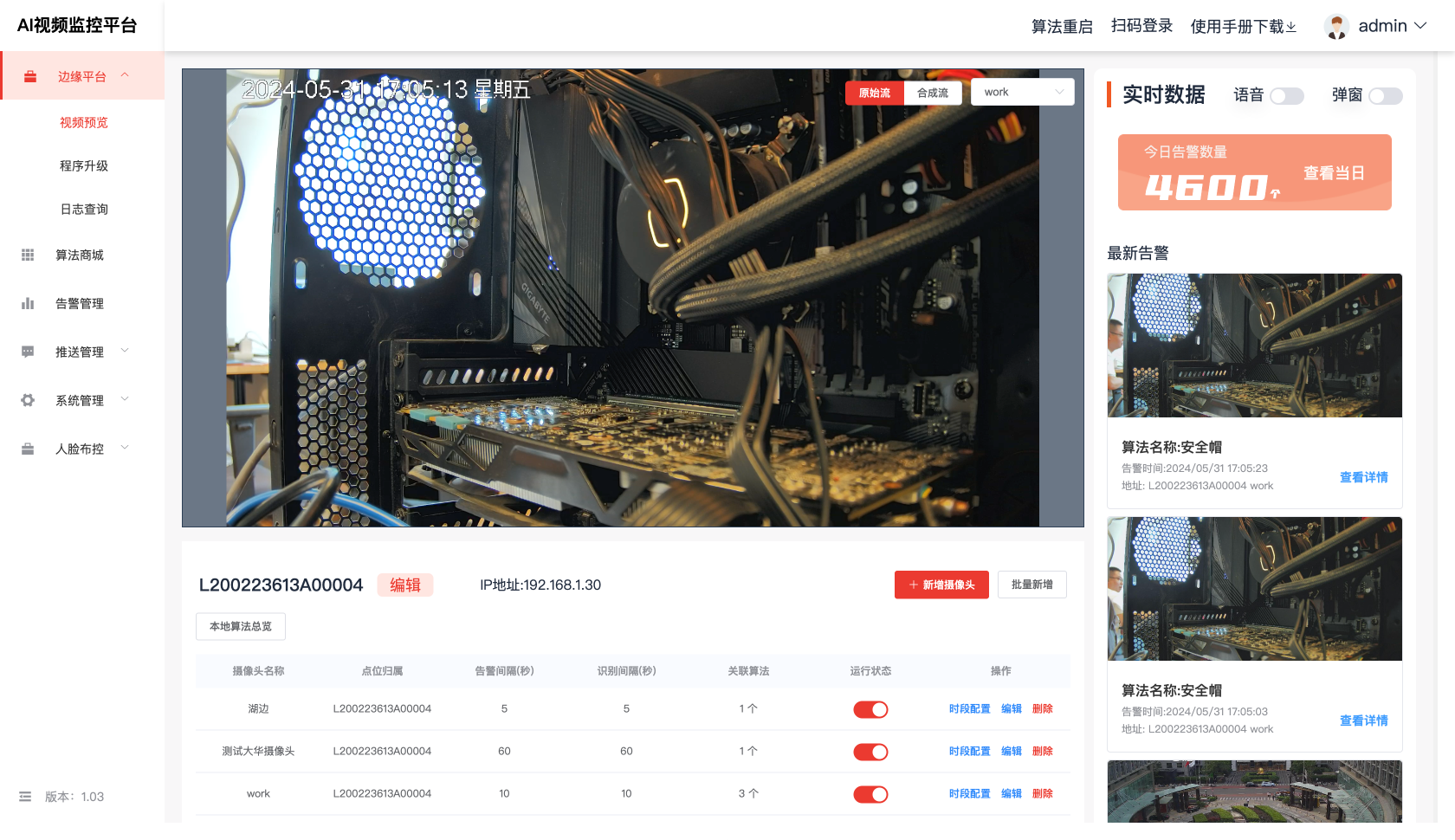目录
- 问题一
- 1.1 根据附件 1,对 402 家供应商的供货特征进行量化分析
- 计算供货特征
- 数据标准化
- 对正向指标归一化
- 对负向指标归一化
- 1.2 建立反映保障企业生产重要性的数学模型
- 熵权法
- 熵权法-TOPSIS
- AHP
- 1.3 在此基础上确定 50 家最重要的供应商,并在论文中列表给出结果。
- 问题二
- 2.1 参考问题 1,该企业应至少选择多少家供应商供应原材料才可能满足生产的需求?
- 遗传算法
- 差异进化
- 粒子群优化(PSO)
import pandas as pd
import warnings
warnings.filterwarnings("ignore")path = '/home/shiyu/Desktop/path_acdemic/ant/数模/历年题目/2021/'
d1 = pd.read_excel((path + '附件1 近5年402家供应商的相关数据.xlsx'), sheet_name='企业的订货量(m³)')
d2 = pd.read_excel((path + '附件1 近5年402家供应商的相关数据.xlsx'), sheet_name='供应商的供货量(m³)')
d3 = pd.read_excel((path + '附件2 近5年8家转运商的相关数据.xlsx'))
问题一
1.1 根据附件 1,对 402 家供应商的供货特征进行量化分析
https://dxs.moe.gov.cn/zx/a/hd_sxjm_sxjmlw_2021qgdxssxjmjslwzs/211025/1734085.shtml

计算供货特征
供货次数(正向)
d2_sub = d2.iloc[:,2:]
supply_times = d2_sub.apply(lambda x: sum(x!=0), axis=1)
平均供货量(正向)
supply_quantity_mean = d2_sub.apply(lambda x: sum(x), axis=1) / supply_times
单次最大供货量(正向)
supply_max = d2_sub.apply(lambda x: max(x), axis=1)
供货稳定性(负向)
d1_sub = d1.iloc[:,2:]
d12_sub = d1_sub.subtract(d2_sub) ** 2
supply_stability = d12_sub.apply(lambda x: sum(x), axis=1) / supply_times
供货连续性
- 间隔次数(负向)
import numpy as npgap_times = [None] * d2_sub.shape[0]
for i in range(0,d2_sub.shape[0]):a = d2_sub.iloc[i,:] == 0gap_times[i] = (a&~np.r_[[False],a[:-1]]).sum()
- 平均间隔周数(负向)
gap_weeks_mean = [None] * d2_sub.shape[0]
for i in range(0,d2_sub.shape[0]):index = [0] + list(np.where(d2_sub.iloc[i,:] != 0)[0]) + [241]new = np.diff(index)gap_weeks_mean[i] = sum(new[np.where((new != 1) & (new != 0))])gap_weeks_mean = gap_weeks_mean / supply_times
- 平均连续供货周数(正向)
supply_weeks_mean = [None] * d2_sub.shape[0]
for i in range(0,d2_sub.shape[0]):index = np.where(d2_sub.iloc[i,:] != 0)[0]new = np.where(np.diff(index) == 1)[0]supply_weeks_mean[i] = len(new) * 2 - len(np.where(np.diff(new) == 1)[0])supply_weeks_mean = supply_weeks_mean / supply_times
合理供货比例(正向)
df = pd.DataFrame(None, columns=list(d2_sub.columns),index=list(d2_sub.index))for i in range(0,d2_sub.shape[0]):for j in range(0,d2_sub.shape[1]):if d1_sub.iloc[i,j] == 0:df.iloc[i,j] = 0if (d2_sub.iloc[i,j] > d1_sub.iloc[i,j] * 0.8) and (d2_sub.iloc[i,j] < d1_sub.iloc[i,j] * 1.2):df.iloc[i,j] = Trueelse:df.iloc[i,j] = Falsesupply_proportion = df.apply(lambda x: sum(x), axis=1) / supply_times
数据标准化
df = pd.DataFrame({'供货次数': supply_times,'平均供货量': supply_quantity_mean,'单次最大供货量': supply_max,'供货稳定性': supply_stability,'间隔次数': gap_times,'平均间隔周数': gap_weeks_mean,'平均连续供货周数': supply_weeks_mean,'合理供货比例': supply_proportion})df.shape
(402, 8)
对正向指标归一化
df_positive = df[['供货次数','平均供货量','单次最大供货量','平均连续供货周数','合理供货比例']]
df_positive_norm = df_positive.apply(lambda x: (x-min(x)) / (max(x)-min(x)), axis=0)
df_positive_norm.head()
| 供货次数 | 平均供货量 | 单次最大供货量 | 平均连续供货周数 | 合理供货比例 | |
|---|---|---|---|---|---|
| 0 | 0.100418 | 0.000328 | 0.000135 | 0.360000 | 0.360000 |
| 1 | 0.292887 | 0.000972 | 0.001785 | 0.577465 | 0.507042 |
| 2 | 0.794979 | 0.023157 | 0.010441 | 0.973822 | 0.727749 |
| 3 | 0.133891 | 0.000321 | 0.000189 | 0.636364 | 0.363636 |
| 4 | 0.443515 | 0.021727 | 0.003435 | 1.000000 | 0.859813 |
对负向指标归一化
df_negative = df[['供货稳定性','间隔次数','平均间隔周数']]
df_negative_norm = df_negative.apply(lambda x: (max(x)-x) / (max(x)-min(x)), axis=0)
df_negative_norm.head()
| 供货稳定性 | 间隔次数 | 平均间隔周数 | |
|---|---|---|---|
| 0 | 0.999999 | 0.809091 | 0.960863 |
| 1 | 1.000000 | 0.590909 | 0.987411 |
| 2 | 0.999988 | 0.863636 | 0.998601 |
| 3 | 0.999993 | 0.809091 | 0.971365 |
| 4 | 1.000000 | 0.945455 | 0.994567 |
# merge data
df_norm = pd.concat([df_positive_norm, df_negative_norm], axis=1, join='inner')
1.2 建立反映保障企业生产重要性的数学模型
- https://www.bilibili.com/read/cv12741665/
- https://github.com/Valdecy/pyDecision

熵权法
https://www.kaggle.com/code/alpayabbaszade/entropy-topsis
首先对供货连续性下的3个二级指标进行加权
supply_continuity = df_norm[['间隔次数','平均间隔周数','平均连续供货周数']]
#Normalize Decision matrix
def norm(X):return X/X.sum()supply_continuity_norm = norm(supply_continuity)
#Entropy Values
k = -(1/np.log(supply_continuity_norm.shape[0]))def entropy(X):return (X*np.log(X)).sum()*kentropy = entropy(supply_continuity_norm)#degree of differentiation
dod = 1 - entropy
w = dod/dod.sum()
weights = w.sort_values(ascending = False)
weights
平均连续供货周数 0.594747
间隔次数 0.384353
平均间隔周数 0.020900
dtype: float64
supply_continuity_weighted = supply_continuity['间隔次数']*weights.iloc[0] + supply_continuity['平均间隔周数']*weights.iloc[1] + supply_continuity['平均连续供货周数']*weights.iloc[2]
df_norm.drop(['间隔次数','平均间隔周数','平均连续供货周数'], axis=1, inplace=True)
df_norm['供货连续性'] = supply_continuity_weighted
df_norm.head(3)
| 供货次数 | 平均供货量 | 单次最大供货量 | 合理供货比例 | 供货稳定性 | 供货连续性 | |
|---|---|---|---|---|---|---|
| 0 | 0.100418 | 0.000328 | 0.000135 | 0.360000 | 0.999999 | 0.858039 |
| 1 | 0.292887 | 0.000972 | 0.001785 | 0.507042 | 1.000000 | 0.743025 |
| 2 | 0.794979 | 0.023157 | 0.010441 | 0.727749 | 0.999988 | 0.917813 |
对6个一级指标进行加权
#Normalize Decision matrix
def norm(X):return X/X.sum()df_norm_new = norm(df_norm)#Entropy Values
k = -(1/np.log(df_norm_new.shape[0]))def entropy(X):return (X*np.log(X)).sum()*kentropy = entropy(df_norm_new)#degree of differentiation
dod = 1 - entropy
w = dod/dod.sum()
weights_entropy = w.sort_values(ascending = False)
weights_entropy
单次最大供货量 0.496440
平均供货量 0.392450
供货次数 0.091647
合理供货比例 0.016205
供货连续性 0.002825
供货稳定性 0.000433
dtype: float64
熵权法-TOPSIS
- https://www.kaggle.com/code/alpayabbaszade/entropy-topsis
- https://blog.csdn.net/qq_42374697/article/details/105901229
def norm(X):return X/np.sqrt((X**2).sum())norm_matrix = norm(df_norm)
w_norm_matrix = norm_matrix*wV_plus = w_norm_matrix.apply(max)
V_minus = w_norm_matrix.apply(min)S_plus = np.sqrt(((w_norm_matrix - V_plus)**2).apply(sum, axis = 1))
S_minus = np.sqrt(((w_norm_matrix - V_minus)**2).apply(sum, axis = 1))
scores = S_minus/(S_plus + S_minus)
d2['综合得分'] = scores * 100
output = d2[['供应商ID','综合得分']]# sort by scores
output = output.sort_values('综合得分', ascending=False)
output.iloc[0:50,:].to_csv('/home/shiyu/Desktop/path_acdemic/ant/数模/历年题目/2021/output/scores_top50.csv')
output.iloc[0:50,:].head()
| 供应商ID | 综合得分 | |
|---|---|---|
| 200 | S201 | 87.972335 |
| 347 | S348 | 57.756055 |
| 139 | S140 | 52.993102 |
| 150 | S151 | 44.951646 |
| 373 | S374 | 41.858722 |
output.to_csv('/home/shiyu/Desktop/path_acdemic/ant/数模/历年题目/2021/output/scores_all.csv')
AHP
- https://www.mindtools.com/a7y139c/the-analytic-hierarchy-process-ahp
- https://github.com/PhilipGriffith/AHPy
df_norm.head()
| 供货次数 | 平均供货量 | 单次最大供货量 | 合理供货比例 | 供货稳定性 | 供货连续性 | |
|---|---|---|---|---|---|---|
| 0 | 0.100418 | 0.000328 | 0.000135 | 0.360000 | 0.999999 | 0.858039 |
| 1 | 0.292887 | 0.000972 | 0.001785 | 0.507042 | 1.000000 | 0.743025 |
| 2 | 0.794979 | 0.023157 | 0.010441 | 0.727749 | 0.999988 | 0.917813 |
| 3 | 0.133891 | 0.000321 | 0.000189 | 0.363636 | 0.999993 | 0.867852 |
| 4 | 0.443515 | 0.021727 | 0.003435 | 0.859813 | 1.000000 | 0.965471 |
import ahpy
comparisons = {('供货次数', '平均供货量'): 3, ('供货次数', '单次最大供货量'): 5, ('供货次数', '合理供货比例'): 5, ('供货次数', '供货稳定性'): 5, ('供货次数', '供货连续性'): 5, ('平均供货量', '单次最大供货量'): 5, ('平均供货量', '合理供货比例'): 3, ('平均供货量', '供货稳定性'): 3, ('平均供货量', '供货连续性'): 3,('单次最大供货量', '合理供货比例'): 1/3, ('单次最大供货量', '供货稳定性'): 1/3, ('单次最大供货量', '供货连续性'): 1/3,('合理供货比例', '供货稳定性'): 1, ('合理供货比例', '供货连续性'): 1,('供货稳定性', '供货连续性'): 1}
comparisons
{('供货次数', '平均供货量'): 3,('供货次数', '单次最大供货量'): 5,('供货次数', '合理供货比例'): 5,('供货次数', '供货稳定性'): 5,('供货次数', '供货连续性'): 5,('平均供货量', '单次最大供货量'): 5,('平均供货量', '合理供货比例'): 3,('平均供货量', '供货稳定性'): 3,('平均供货量', '供货连续性'): 3,('单次最大供货量', '合理供货比例'): 0.3333333333333333,('单次最大供货量', '供货稳定性'): 0.3333333333333333,('单次最大供货量', '供货连续性'): 0.3333333333333333,('合理供货比例', '供货稳定性'): 1,('合理供货比例', '供货连续性'): 1,('供货稳定性', '供货连续性'): 1}
cal = ahpy.Compare(name='Drinks', comparisons=comparisons, precision=3, random_index='saaty')
cal.target_weights
{'供货次数': 0.445,'平均供货量': 0.232,'合理供货比例': 0.093,'供货稳定性': 0.093,'供货连续性': 0.093,'单次最大供货量': 0.044}
cal.consistency_ratio
0.032
CR < 0.1, 可认为判断矩阵的一致性可以接受
1.3 在此基础上确定 50 家最重要的供应商,并在论文中列表给出结果。
将熵权法和AHP得到的权重进行平均,得到最终的指标权重,然后加权计算各供应商的得分
weights_ahp = pd.DataFrame.from_dict(cal.target_weights, orient='index',columns=['AHP权重'])
import statisticsresults = pd.concat([weights_ahp, weights_entropy], axis=1)
results.columns = ['AHP权重','熵权法权重']
results['最终权重'] = results.apply(lambda x: statistics.mean(x), axis=1)
results
| AHP权重 | 熵权法权重 | 最终权重 | |
|---|---|---|---|
| 供货次数 | 0.445 | 0.091647 | 0.268324 |
| 平均供货量 | 0.232 | 0.392450 | 0.312225 |
| 合理供货比例 | 0.093 | 0.016205 | 0.054603 |
| 供货稳定性 | 0.093 | 0.000433 | 0.046716 |
| 供货连续性 | 0.093 | 0.002825 | 0.047912 |
| 单次最大供货量 | 0.044 | 0.496440 | 0.270220 |
d2['综合得分2'] = (df_norm['供货次数']*0.268324 + df_norm['平均供货量']*0.312225 + df_norm['合理供货比例']*0.054603 + df_norm['供货稳定性']*0.046716 + df_norm['供货连续性']*0.047912 + df_norm['单次最大供货量']*0.270220)*300
output = d2[['供应商ID','综合得分2']]# sort by scores
output = output.sort_values('综合得分2', ascending=False)
output.iloc[0:50,:].to_csv('/home/shiyu/Desktop/path_acdemic/ant/数模/历年题目/2021/output/scores_top50_AHP&Entropy.csv')
# 对排名前10的供应商可视化
df = output.iloc[0:10,:]
df = df.sort_values(by='综合得分2')
df
| 供应商ID | 综合得分2 | |
|---|---|---|
| 307 | S308 | 160.745089 |
| 329 | S330 | 164.460643 |
| 107 | S108 | 174.260128 |
| 360 | S361 | 174.874852 |
| 373 | S374 | 175.082953 |
| 228 | S229 | 179.242563 |
| 139 | S140 | 196.710758 |
| 150 | S151 | 197.078972 |
| 200 | S201 | 199.599719 |
| 347 | S348 | 200.332317 |
# Horizontal lollipop plot
import pandas as pd
import matplotlib.pyplot as plt
import numpy as np# Linux show Chinese characters *** important
plt.rcParams['font.family'] = 'WenQuanYi Micro Hei'
plt.rcParams['figure.dpi'] = 300
plt.rcParams['savefig.dpi'] = 300my_range=range(1,11)
plt.hlines(y=my_range, xmin=0, xmax=df['综合得分2'], color='skyblue')
plt.plot(df['综合得分2'], my_range, "o")# Add titles and axis names
plt.yticks(my_range, df['供应商ID'])
plt.title("综合得分前10的供应商")
plt.xlabel('供应商综合得分')
plt.ylabel('供应商ID')# Show the plot
plt.show()

问题二
Pyhon中智能算法的模块:
https://scikit-opt.github.io/scikit-opt/#/en/README
Python中优化的模块
https://docs.scipy.org/doc/scipy/tutorial/optimize.html
formular editor:
https://editor.codecogs.com/
2.1 参考问题 1,该企业应至少选择多少家供应商供应原材料才可能满足生产的需求?


平均损失率
α \alpha α
loss_rate = sum(d3.iloc[:,1:].apply(lambda x: sum(x) / sum(x!=0), axis=0)) / 240
loss_rate
1.3063532832341274
供货量 x ^ i , t \widehat{x}_{i,t} x i,t
supply_quantity_mean[:6]
0 1.960000
1 3.845070
2 68.785340
3 1.939394
4 64.598131
5 2.307692
dtype: float64
供应商得分 s i s_{i} si
scores = pd.read_csv('/home/shiyu/Desktop/path_acdemic/ant/数模/历年题目/2021/output/scores_all.csv')
scores = scores.iloc[:,1:]
index_A = np.where(d2['材料分类'] == 'A')[0]
index_B = np.where(d2['材料分类'] == 'B')[0]
index_C = np.where(d2['材料分类'] == 'C')[0]
import numpy as npdef func(y):# input y is a list with 402 dims# set y as inty = np.around(np.array(y))res = sum(y) / sum(y * scores['综合得分'])return res
constraint_eq = [lambda y: sum((np.around(np.array(y))[index_A] * supply_quantity_mean[index_A] * (1-loss_rate/100)) / 0.6) + sum((np.around(np.array(y))[index_B] * supply_quantity_mean[index_B] * (1-loss_rate/100)) / 0.66) + sum((np.around(np.array(y))[index_C] * supply_quantity_mean[index_C] * (1-loss_rate/100)) / 0.72) - 2.82 * 10**4
]
遗传算法
from sko.GA import GA
y_len = 402ga = GA(func=func, n_dim=y_len, size_pop=50, max_iter=800, prob_mut=0.001, lb=[0]*y_len, ub=[1]*y_len, precision=1,constraint_eq=constraint_eq)
best_y_ga = ga.run()
suppliers_index_ga = np.where(best_y_ga[0] == 1)[0].tolist()
suppliers_ga = d2.iloc[suppliers_index_ga,0:2]
print('选择的供应商数量:', suppliers_ga.shape[0])
选择的供应商数量: 210
差异进化
from sko.DE import DE
y_len = 402
de = DE(func=func, n_dim=y_len, size_pop=50, max_iter=800, lb=[0]*y_len, ub=[1]*y_len,constraint_eq=constraint_eq)best_y_de = de.run()
y_de = np.around(best_y_de[0])
suppliers_index_de = np.where(y_de == 1)[0].tolist()
suppliers_de = d2.iloc[suppliers_index_de,0:2]
print('选择的供应商数量:', suppliers_de.shape[0])
选择的供应商数量: 184
粒子群优化(PSO)
from sko.PSO import PSO
y_len = 402
pso = PSO(func=func, n_dim=y_len, pop=40, max_iter=150, lb=[0]*y_len, ub=[1]*y_len, constraint_eq=constraint_eq)
best_y_pso = pso.run()
y_pso = np.around(best_y_pso[0])
suppliers_index_pso = np.where(y_pso == 1)[0].tolist()
suppliers_pso = d2.iloc[suppliers_index_pso,0:2]
print('选择的供应商数量:', suppliers_pso.shape[0])
选择的供应商数量: 152
import matplotlib.pyplot as plt
# Linux show Chinese characters *** important
plt.rcParams['font.family'] = 'WenQuanYi Micro Hei'
plt.rcParams['figure.dpi'] = 300
plt.rcParams['savefig.dpi'] = 300plt.plot(pso.gbest_y_hist)
plt.title("目标函数的迭代过程")
plt.xlabel('迭代次数')
plt.ylabel('目标函数值')
plt.show()




















